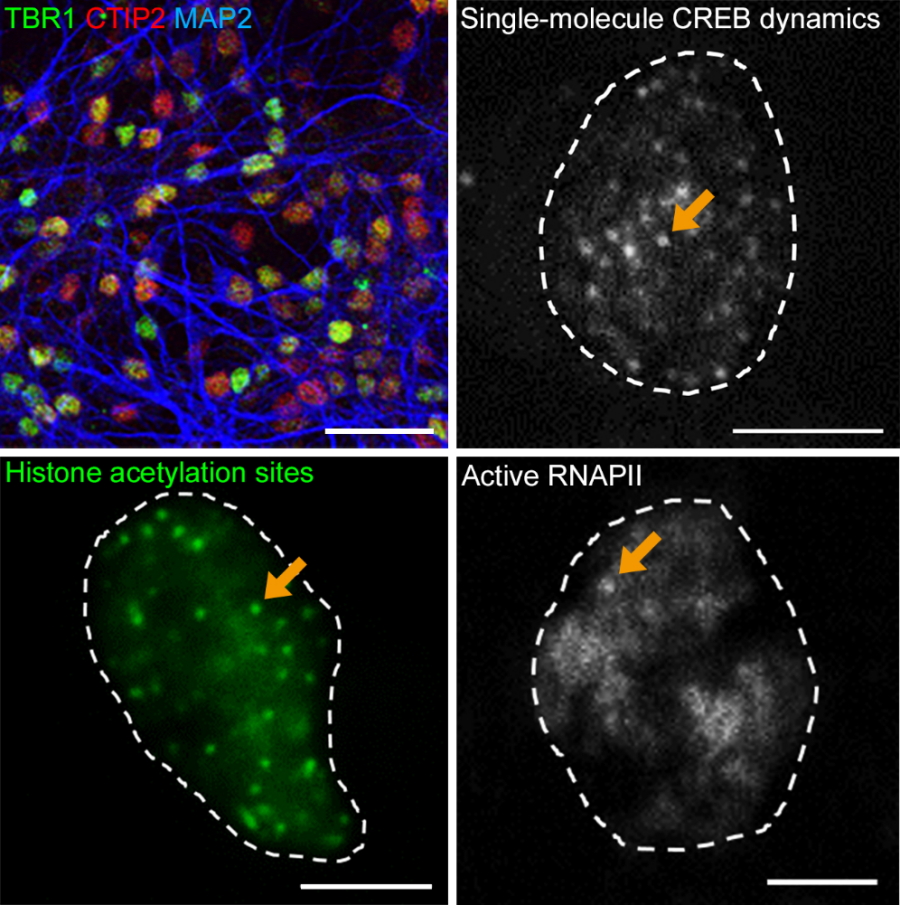Repetitive CREB-DNA interactions at gene loci predetermined by CBP induce activity-dependent gene expression in human cortical neurons
| Journal | Cell Reports (2023) |
|---|---|
| Title | Repetitive CREB-DNA interactions at gene loci predetermined by CBP induce activity-dependent gene expression in human cortical neurons |
Abstract
Neuronal activity-dependent transcription plays a key role in plasticity and pathology in the brain. An intriguing question is how neuronal activity controls gene expression via interactions of transcription factors with DNA and chromatin modifiers in the nucleus. By utilizing single-molecule imaging in human embryonic stem cell (ESC)-derived cortical neurons, we demonstrate that neuronal activity increases repetitive emer- gence of cAMP response element-binding protein (CREB) at histone acetylation sites in the nucleus, where RNA polymerase II (RNAPII) accumulation and FOS expression occur rapidly. Neuronal activity also en- hances co-localization of CREB and CREB-binding protein (CBP). Increased binding of a constitutively active CREB to CBP efficiently induces CREB repetitive emergence. On the other hand, the formation of histone acetylation sites is dependent on CBP histone modification via acetyltransferase (HAT) activity but is not affected by neuronal activity. Taken together, our results suggest that neuronal activity promotes repetitive CREB-CRE and CREB-CBP interactions at predetermined histone acetylation sites, leading to rapid gene expression.

Fig. 1
In human ES cell-derived cortical neurons (upper left), single-molecule CREB dynamics was observed (upper right). Activity-dependent repetitive CREB binding to DNA occurred at histone acetylation sites (lower left), where active RNAPII accumulation induces gene expression (lower right). Dashed lines indicate the outline of the nucleus. Scale bars: 50 µm (top left) and 5 µm (others).
| Authors | Yuri Atsumi (1), Ryohei Iwata (2), Hiroshi Kimura (3), Pierre Vanderhaeghen (2), Nobuhiko Yamamoto (1, 4), Noriyuki Sugo (1, 5)
|
|---|
